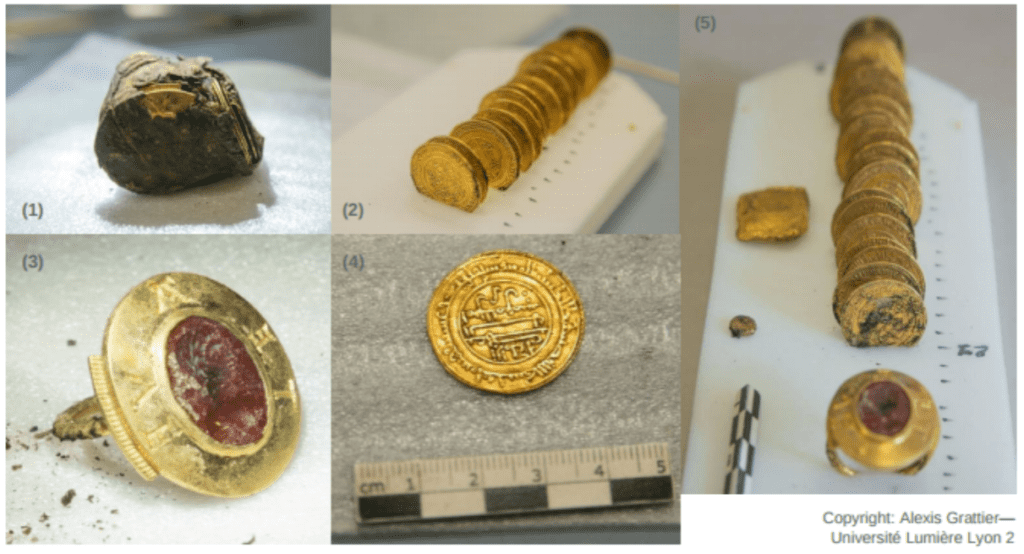French archaeologists have unearthed a breathtaking hoard of medieval riches at the Abbey of Cluny, in Saône-et-Loire. The riches include over 2,200 silver deniers and oboles, 21 Almoravid gold dinars, a signet ring and other gold objects. It’s the largest single collection of silver deniers ever discovered, and the first time European coins were found hidden alongside Arab ones and such a prohibitively expensive object as a signet ring.

This round of excavation works at the Abbey of Cluny started in 2015 under the supervision of Anne Baud, an academic at the Université Lumière Lyon 2, and Anne Flammin, an engineer at the Centre National de la Recherche Scientifique (CNRS). Working together with colleagues and 9 students enrolled in the Master of Archaeology and Archaeological Science at the Lyon 2 University, they’ve discovered a treasure likely dating from the first half of the 12th century.
Fit for Smaug
The treasure trove consists of over 2,200 European silver coins, most of which were minted at the Abbey, which were stored in a cloth bag — traces of which still remain on some of the coins. Western currency at the time was dominated by the silver denier, and such deniers would likely have been used for everyday purchases.
Inside the bag, archaeologists also found a tightly bound and knotted tanned hide bundle containing 21 Arab gold denars, minted between 1211 and 1311 in Morocco and Spain under Ali ibn Yusuf, a member of the Berber Almoravid dynasty. Gold coins at this time were largely reserved for rare and significant transactions.
Alongside the coins, the team recovered a gold signet ring with “a red intaglio depicting the bust of a god” likely created in the first half of the 12th century, a foil of gold sheet weighing 24 grams that was stored in a case, and a small circular object made of gold.

Image credits Alexis Grattier / Université Lumière Lyon 2
The finding is exceptional on several counts. For starters, the sheer size and value of the of riches unearthed make this hoard stand out — this is the largest single stash of deniers ever found. It’s also a very unusual to find Arab coins in a monastic setting, both because of their huge value — which prohibited use in anything but the largest transactions — especially at Cluny, which was one of the largest abbeys of Western Europe during the Middle Ages.
The riches help color the history of Cluny Abbey, a historical site open to the public and also raise some very exciting questions. How did this treasure get here, who did it belong to and who brought it? And why was it hidden?
Vincent Borrel, a PhD student at the Archaeology and Philology of East and West (CNRS / ENS) research unit is currently studying the treasure in more detail to identify and date the various pieces with greater precision, hopefully gaining some insight into what the answers to these questions might be.





